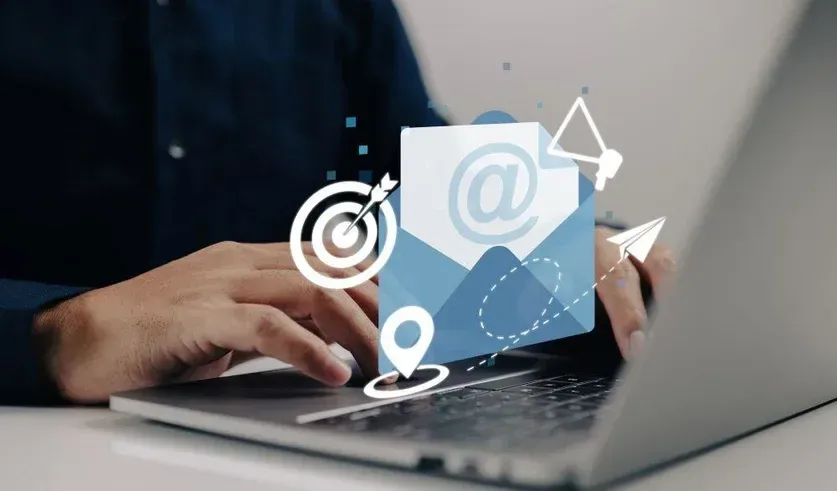- HOME
- ABOUT US
- SERVICES
- CUSTOMER STORIES
- OUR EXPERTS
- CONTACT US
- BLOG
In need of some sound digital marketing advice?
Book a free consultation with one of our experts.

Making a difference in our clients’ lives
We positively impact the lives of our clients beyond their KPI reports.
Blog Layout
Artificial intelligence is revolutionizing digital marketing. This constantly developing technology affects every marketing tactic, from content to search engine optimization (SEO). Since boosting search rankings is one of the most important marketing goals, let’s focus on how AI and SEO go together.
AI-powered SEO has the power to yield excellent results, working with precision and efficiency that no marketing team could achieve without a little technological help.
However, the benefits that AI brings to marketers go beyond analysis and metrics. According to a survey conducted by HubSpot, marketers say that AI offers at least three advantages:
- Faster content creation
- The ability to personalize content
- Tools to help generate new ideas
At the same time, AI also poses several challenges for marketers. The question is not simply how to use AI tools for digital marketing but also how to create and optimize marketing content for search engines that are now driven by AI.
AI-powered SEO is an optimization strategy driven by artificial intelligence. AI is used to optimize web pages to achieve higher rankings in search engine results. AI tools can analyze pages with considerable accuracy and precision, providing recommendations to improve rankings. Advanced algorithms, machine learning, and language processing can process large volumes of pages and the content they contain, generating accurate results in seconds. The speed and precision of these processes mean that you can optimize your pages much more quickly and effectively than you otherwise could. You can use AI tools to check your pages regularly and adjust as needed.
In this way, AI can consistently and repeatedly optimize your content and keep you ahead of the market and your competition. It can monitor search data, brainstorm content topics, find link-building opportunities, and detect and fix technical problems. It can also aggregate, summarize, and package content for fast results through tools such as AI Overviews and zero-click searches.
The Rise of AI Overviews and Zero-Click Searches
Leveraging the power of AI, Google has introduced two extremely useful tools that are game-changers for SEO specialists: AI Overviews and zero-click searches.
AI Overviews appear at the top of Google SERPs when the search engine’s system determines that generative responses are appropriate, such as when the searcher might benefit from summaries of information from multiple sources.
Zero-click searches are pretty similar to AI Overviews. Also known asQuick Answers,Knowledge Boxes,Featured Snippets, orTop Stories,zero-click searchesare quick search queries where the user finds the answer to their query at the top of the search engine results page (SERP) without clicking through any websites.Examples include answering queries such as "What is the time in Tokyo right now?” or “What will the weather be like tomorrow?” It can also answer queries about currency conversions or math problems or create content summaries, similar to AI Overviews.
These search engine functions are helpful for users, but how do they benefit marketers?
Google’s AI Overviews are both a problem and a blessing for marketers. On the one hand, it can help your audience find your content more quickly. Soon, AI Overviews may even include ads, meaning that if your pay-per-click ad comes up in the overview, it will be in an exceptionally competitive position. You can also use Overview to create detailed plans using AI-generated information, potentially improving user engagement.
However, there are also a few potential drawbacks. As things currently stand, ads are placed underneath Overviews, meaning they can quickly go unnoticed. Organic search traffic to your website may also drop as users find the information they need in the Overview and do not need to click through to your website. As users gather basic, easily accessible information from Overviews, they may stop engaging with the actual sources of this information—such as your website.
While the risks of diminished organic traffic are worrying, it is possible to work with them. Marketers will have to rethink their optimization strategies. You can take the following actions with your SEO and content strategies to help you keep ahead of these new developments:
- We have been saying this for years: Instead of thinking too hard about keywords, focus on creating quality content. Your content needs to provide a thought leadership perspective for it to start appearing in AI overviews.
- Concentrate on creating a really good user experience for your website. This will boost your engagement metrics, prompting Google’s AI to rank your site higher.
- Focusing on quality, authoritative content can help you leverage the rise of zero-click experiences and ensure that your content appears in the selected search results.
- When compiling content, cover topics comprehensively, work hard on engaging readers authentically, use visuals that grab attention, and effectively supplement the written content. Finally, revise and refresh your content regularly.
- Prioritize video content creation. Rather than starting with written content, capture key insights and expertise through video first, then repurpose that content into text formats. This approach ensures authenticity, builds trust, and positions your content for future search behaviors as search engines get better at indexing audio and video content. Video content is also more discoverable across multiple platforms like YouTube and TikTok, giving you a broader reach than text alone.
Understanding Search Intent in the Age of AI
The key to making the most out of AI-driven SEO is to master user intent and anticipate the relevant search needs with content that fulfills the criteria of Experience, Expertise, Authoritativeness, and Trustworthiness (E.E.A.T). Before creating helpful content, you need to know what your readers will be searching for. For this purpose, you can use Google Analytics, Search Console, and keyword research tools to discover your audience’s preferences. Search Intent Optimization (SIO) is thus every bit as important as SEO. As you create your website content, your aim should be to create an overwhelmingly positive user experience. Your audience should feel your content was designed precisely with them in mind.
There are four general types of search intent:
- Informational: knowledge and insights on specific topics
- Navigational: searches for numbers, addresses, emails, etc.
- Commercial: shopping or business inquiries, but not quite with the final intent to make a purchase
- Transactional: significant step beyond commercial intent; when a user has decided to buy a product and is looking for the best place to do so or the best deal.
Depending on your business, you should be able to tell which of these categories suits you best. You might target each of them at different times and with different pieces of content. More importantly, you will know which categories most apply to your audience.
Each category can be narrowed down to the specifics of ideal customers and top-ranking keywords. On one side of the SEO value chain, AI makes it easier to monitor and understand user intent, and you can then use the metrics you gather to inform your content creation and SEO strategies. Conversely, internet users are growing weary of generic, AI-generated content, so you can make fresh, unique content that stands out.
Creating "Pull-Through" Content That Google Can't Summarize
Optimizing content for AI Overviews and zero-click searches is one aspect of future-proofing your SEO. However, there are other approaches than this, especially when your main goal is to draw traffic to your website. You would then need to develop content that fulfills all the E.E.A.T criteria. If your content has plenty of depth and authority and engages the target market but is too broad and deep for Google AI to summarize, it will still rank highly on the SERPs without ending up in the Overviews. This will ensure that internet searchers are directed to your site, where you need them to be.
This kind of high-quality content is called “pull-through” content and needs to become a central part of your marketing strategy if it isn’t already.
AI Overviews usually use concise content that answers common search queries directly. To preserve your organic click-through rate, you must create content optimized for keywords that are unlikely to trigger an overview and are too information-dense to appear in zero-click search results. To create pull-through content, you must thoroughly understand your customers’ needs. You may want to consider writing fewer blogs and opt for alternative formats such as data visualizations, infographics, diagrams, and video content.
Interactive Tools for Better Engagement
AI has revolutionized how we can create interactive content. Using AI tools, you can quickly build calculators, configurators, and decision-making tools that help potential customers evaluate their options. These interactive elements improve engagement metrics, are highly shareable on social media, and can significantly boost conversion rates. Best of all, they can be created using simple AI prompts without requiring extensive development resources.
Measuring the Uniqueness of Your Content With AI
The secret to mastering AI-powered SEO is using AI tools to help you understand and leverage the AIs that drive the search engines. Google AI uses sophisticated algorithms to analyze your content and rank it accordingly, so it makes sense to use AI to help you design content that will pass all the search engine’s tests. We all know that AI is not particularly good at generating unique content. Still, it is surprisingly good at identifying it, which helps you improve the value and impact of your content marketing strategies.
You should have tools like Google Analytics at your fingertips to help you test the uniqueness of your content. The characteristics of unique content are:
- A fresh viewpoint
- In-depth analysis that shows real insight
- No copying or repurposing
- Audience-specific content
- Includes a unique style and expertise, presented in a distinctive voice with personal touches
Monitoring Search Behavior Changes
To stay ahead of evolving search patterns, regularly monitor how your customers find your business. Instead of asking, "How did you find us?" dig deeper with questions about their search process. Track changes in search query length in Google Search Console, as longer, more conversational queries may indicate shifting search behaviors.
Additionally, test your brand's visibility in chat-based search tools like ChatGPT to understand where to improve your presence.
How WSI Can Help You Get Ahead of the Curve
AI tools can help you improve and future-proof your SEO strategies by processing data you could never work through. With AI-driven data analysis, you can refine your understanding of your target audience and develop optimization tactics based on hard facts. As mentioned, AI tools will help you get past the AI gatekeepers driving search engines.
The Best Digital Marketing Insight and Advice
The WSI Digital Marketing Blog is your go-to-place to get tips, tricks and best practices on all things digital marketing related. Check out our latest posts.
Subscribe Blog
Thank you for contacting us.
We will get back to you as soon as possible.
We will get back to you as soon as possible.
Oops, there was an error sending your message.
Please try again later.
Please try again later.
*You may unsubscribe from digital communications at anytime using the link provided in WSI emails.
For information on our privacy practices and commitment to protecting your privacy, check out our Privacy Policy and Cookie Policy.
For information on our privacy practices and commitment to protecting your privacy, check out our Privacy Policy and Cookie Policy.
Don't stop the learning now!
Here are some other blog posts you may be interested in.

By WSI Team
•
March 27, 2025
In the ever-evolving digital marketing landscape, video content has emerged as a powerful tool for capturing audience attention, driving engagement, and achieving measurable results. As the world becomes increasingly visual and attention spans shorten, video content offers a dynamic and accessible way for businesses to communicate their value propositions effectively. Here's why a video-first content strategy can significantly enhance your brand's discoverability and ROI. The Rise of Video Marketing The statistics around video marketing are compelling: 91% of businesses now use video as a marketing tool, underscoring its critical role in engaging audiences and driving business growth. 68% of marketers who haven't yet adopted video plan to start doing so in 2025, signaling a significant industry shift towards this dynamic medium. Platforms like YouTube dominate the video marketing space, with 90% of video marketers utilizing the platform to reach their audiences. These numbers reveal the widespread adoption of video and its effectiveness. Marketers who invest in video consistently report high success, with 87% attributing an increase in lead generation to video content and 87% confirming video directly increases sales. Why Video Content Is More Discoverable Here are several compelling reasons why video content stands out as more discoverable in the digital landscape: Algorithms Prioritize Video: Social media platforms like Instagram, Facebook, and LinkedIn increasingly prioritize video content in their algorithms. Videos are likelier to appear in users' feeds, mainly if they generate engagement through likes, comments, or shares. For example, short-form videos such as Instagram Reels or TikToks capture attention quickly and are highly shareable, amplifying their reach organically. Enhanced SEO Benefits: Video content boosts SEO efforts by keeping users on your website longer, which signals to search engines that your content is valuable. According to HubSpot, adding a video to a landing page can increase conversion rates by up to 86% , while embedding videos in blog posts can significantly improve organic traffic. Mobile Accessibility: With 75% of viewers consuming short-form video content on mobile devices, videos are tailored to meet the needs of today's on-the-go consumers. This accessibility ensures that your content can reach audiences anytime, anywhere. Cross-Platform Adaptability: Videos can be repurposed across multiple platforms, from YouTube to Instagram, LinkedIn, and beyond. Each platform offers unique ways to engage audiences through short-form stories, long-form tutorials, or live-action streams. This adaptability increases the discoverability of your content across diverse demographics. Types of Videos That Drive Discoverability Here is a detailed exploration of the various types of videos that significantly enhance discoverability and capture audience interest in the digital marketing realm: Explainer Videos 91% of consumers have watched an explainer video to learn more about a product or service. These videos break down complex concepts into easily digestible formats, making them ideal for addressing customer pain points and showcasing product benefits. Short-Form Videos With attention spans dwindling, videos under 60 seconds are proving highly effective. Platforms like TikTok and Instagram Reels are perfect for creating snappy, engaging content that resonates with viewers. Live-Action Videos 48% of video marketers create live-action videos emphasizing authenticity and relatability, fostering trust and emotional connections with audiences. Interactive Videos Interactive video formats, which allow viewers to engage directly through clickable elements, are becoming increasingly popular. Brands like Nike and IKEA have seen up to 30% higher conversions using this innovative approach. How Video Enhances Consumer Engagement Video content seamlessly integrates with the evolving preferences of modern consumers, who increasingly favor visual and interactive mediums for learning, shopping, and engaging with brands. According to HubSpot: 52% of consumers are likelier to share video content than other formats, amplifying its reach. 62% of consumers rely on brand videos for their research, making video an essential part of decision-making. 89% of consumers want to see more videos from brands in 2024, emphasizing the importance of video in meeting audience expectations. Furthermore, videos encourage higher engagement rates on social media platforms, where users are more inclined to comment, share, and react to dynamic and visually appealing content. The Return on Investment (ROI) of Video Marketing To ensure you get an ROI from your video marketing strategy, it's crucial to do the following: Understand Your Audience: Use analytics tools to identify what content resonates most with your audience. Are they more likely to engage with tutorials, testimonials, or behind-the-scenes footage? Prioritize Authenticity: Consumers prefer relatable and authentic videos over polished, high-production-value content. Focus on storytelling and genuine connections to build trust and loyalty. Optimize for Mobile: With a significant portion of video content consumed on mobile devices, ensure your videos are optimized for smaller screens and fast loading times. Leverage Multiple Platforms: Tailor your videos to each platform's unique strengths. For example, YouTube can be used for long-form tutorials, Instagram can be used for short Reels, and LinkedIn can be used for professional insights. Monitor Performance Metrics: Track metrics like views, shares, engagement, and conversion rates to refine your strategy. Tools like Google Analytics and social media insights can provide valuable data. Embracing the Future of Video Marketing As video consumption habits continue to evolve, businesses must stay ahead of the curve to remain competitive. Here are some key trends to watch in 2025: Interactive and Shoppable Videos: Interactive elements within videos are expected to drive higher engagement and conversions, particularly in eCommerce. Personalized Video Content: Tailored videos based on user preferences will become increasingly popular, enhancing customer experience and loyalty. AI and Automation in Video Creation: AI-powered tools will simplify the video production process, making it more accessible for businesses of all sizes. A video-first content strategy is no longer a luxury but a necessity for businesses aiming to enhance their discoverability and achieve meaningful results. By leveraging the power of video, brands can capture audience attention, boost engagement, and drive conversions like never before. With compelling statistics, a diverse range of video formats, and actionable insights into consumer behavior, the potential of video marketing in 2025 and beyond is limitless. Are you ready to elevate your digital marketing game with video? Contact WSI today to learn how we can help you craft a winning video-first strategy tailored to your business goals.

By WSI Team
•
March 27, 2025
Lead nurturing is like gardening: it requires patience, relevance, and an environment conducive to growth. Just as gardeners carefully tend to their plants, ensuring they have the right amount of sunlight, water, and nutrients, lead nurturing creates an atmosphere where potential customers can flourish. It's about investing time and effort, understanding your leads' specific needs and interests, and providing them with the right information and resources at the right moments. This process is essential for expecting growth from the seeds you have sown, as it allows you to cultivate strong, lasting relationships with your prospects, ultimately guiding them toward becoming loyal customers. Email marketing is one of the most powerful tools for nurturing leads and building lasting relationships with potential customers. It's not about hard selling but about providing value and staying top of mind; and in this blog, we'll discuss the art and science of crafting lead-nurturing email campaigns, their effectiveness, best practices, and actionable strategies for seamlessly moving prospects down the sales funnel. What is a Lead Nurturing Email? A lead nurturing email is strategically crafted to guide prospects through the buyer's journey, gradually converting them into customers. These emails engage, educate, and entice leads to interact further with your brand by addressing their needs and interests. The Advantages of Lead Nurturing Emails Enhanced ROI: Companies with successful lead nurturing generate 50% more sales-ready leads at a 33% lower cost (Marketo). Higher Conversions: Nurtured leads make 47% larger purchases than non-nurtured leads. Personalized Connections: Tailored messaging based on segmentation and automation leads to stronger relationships. Increased Engagement: Emails triggered by user actions, such as abandoned cart emails, boast conversion rates three times higher than other automated emails. How Lead Nurturing Works Lead nurturing emails are a series of touchpoints designed to maintain relationships with potential customers over time. The process begins when a lead interacts with your brand—such as signing up for a newsletter or downloading a resource. From there, targeted email campaigns address the lead's pain points, highlight your brand's solutions, and provide value at every sales funnel step. Key Goals of Lead Nurturing Emails Some of the key goals of lead nurturing emails include: Capture Attention: Use compelling subject lines and relevant content. Personalize the Experience: Align content with the lead's journey. Educate and Entice: Highlight your product or service's features, benefits, and unique selling propositions (USPs). Crafting an Effective Lead Nurturing Email Sequence A lead nurturing email sequence involves a series of automated emails triggered by specific actions. These emails are designed to move the lead closer to a purchasing decision. Here's an example sequence for a new contact: Welcome Email: Greet the lead and introduce your brand's value proposition. Educational Content: Share insights, tips, or case studies relevant to their interests. Product Benefits: Highlight features that address their pain points. Social Proof: Include testimonials, reviews, or success stories. Exclusive Offer: Provide a discount or incentive to encourage conversion. The ultimate goal of this sequence is to gradually build trust and rapport with the lead, address their unique needs and concerns, and ultimately move them closer to making a purchasing decision. By delivering the right message at the right time, these emails help nurture the lead's interest and engagement, paving the way for a successful conversion. Lead Nurturing Email Best Practices These are some of the best practices to follow when implementing a lead nurturing email strategy: Provide Valuable Content Understand your audience's needs, interests, and pain points. Share actionable advice, industry insights, or helpful resources. Example: If a lead downloaded an ebook on digital marketing trends, follow up with more profound insights or real-world examples of success stories. Focus on One Topic Per Email Avoid overwhelming your audience with too much information. Ensure each email has a clear purpose and call-to-action (CTA). Example: Instead of discussing multiple services in one email, focus on one solution and its benefits. Personalize and Segment Use dynamic fields to address recipients by name and tailor content to their preferences. Segment your audience based on behaviors, demographics, and interests. Example: A lead who visited your pricing page might receive an email highlighting your product's ROI, while a content download lead might receive educational resources. Test and Optimize A/B test subject lines, CTAs, email copy, and design. Track open rates, click-through rates, and conversion metrics to refine your strategy. Pro Tip: Test one variable at a time to understand its impact. Ensure Mobile Responsiveness Over 50% of emails are opened on mobile devices. Use responsive designs, concise copy, and clear CTAs for a seamless mobile experience. Create a Logical Flow Each email should build upon the previous one. Map out a cohesive narrative that guides leads through the buyer's journey. Example: Start with educational content, move to product benefits, and conclude with a time-sensitive offer. Maintain Brand Consistency Use consistent branding, tone, and visuals to build trust. Align email design with your website and other marketing materials. How to Write a Lead Nurturing Email Ready to start writing lead nurturing emails? Here are the essential steps to help you create compelling emails that resonate with your audience and guide them seamlessly through the buyer's journey: Compelling Subject Line Grab attention immediately. Use personalization, urgency, or curiosity. Example: "John, here's how to simplify your marketing strategy today!" Personalized Greeting Address the recipient by name for a personal touch. Example: "Hi Sarah, we noticed you're exploring digital marketing tools…" Engaging Introduction Hook the reader with a relevant and compelling opening. Example: "Are you spending too much time managing your marketing campaigns manually? We've got a solution!" Value-Driven Body Content Highlight benefits, solve problems, or provide actionable insights. Use bullet points for clarity and scannability. Example: "With our [tool/service], you can automate repetitive tasks, optimize campaigns in real-time, and easily track ROI." Strong CTA Encourage a specific action (e.g., download a resource or book a demo). Example: "Click here to schedule your free consultation today!" Professional Closing Reinforce your brand's value and invite further engagement. Example: "We're here to help you achieve your goals. Feel free to reply to this email with any questions!" Measuring the Success of Lead Nurturing Campaigns To evaluate the effectiveness of your lead nurturing efforts, monitor the following key performance indicators (KPIs): Open Rates: Assess subject line effectiveness. Click-Through Rates: Measure engagement with CTAs. Conversion Rates: Track leads turning into customers. Engagement Metrics: Monitor replies, downloads, and interactions. These KPIs serve as measurable values that provide insights into your strategies' performance and where improvements can be made. By keeping a close eye on these indicators, you can determine the success of your campaigns, identify areas that require adjustment, and ensure that your lead nurturing process effectively guides prospects through the sales funnel. Lead nurturing emails are the cornerstone of a successful email marketing strategy. By delivering value-driven, personalized, and timely content, you can build lasting relationships, guide leads through the buyer's journey, and drive conversions. Remember, lead nurturing is a process, not a one-time event. With the right strategies and consistent effort, you'll create a loyal customer base that trusts and advocates for your brand. Start nurturing your leads today and watch your business thrive beyond the blast! Contact us for more information.

By WSI Team
•
March 27, 2025
As a business owner, you know that time is your most valuable asset. Yet how many hours do you spend in meetings, trying to balance active participation with furious note-taking? Or worse, how many important details slip through the cracks because you couldn't write everything down? Enter AI notetakers – your digital assistant for capturing, organizing, and actioning all those crucial business conversations. The Hidden Cost of Traditional Note-Taking in Business Let's be honest: traditional note-taking costs your business more than you might realize. Beyond the obvious time spent writing things down, there's the constant context-switching between listening and writing, the risk of missing crucial details, and the hours spent decoding and sharing your notes afterward. Think about your last important client meeting. Were you fully present in the conversation or splitting your attention between listening and writing? How much time did you spend afterward turning those hasty scribbles into actionable items? This is where AI notetakers can transform your workflow. What Makes AI Notetakers a Game-Changer for Business Owners Unlike enterprise-level solutions that require significant investment, today's AI notetakers are accessible and practical for small and medium-sized businesses. They work like having a highly efficient assistant in every meeting, capturing every word while you focus on what matters most – the actual conversation. Popular AI notetakers each have their own strengths: Fireflies.ai: Specializes in customer relationship management (CRM) integration and sales meeting analytics. If you're heavily focused on sales and customer interactions, this tool's ability to sync with your CRM and analyze customer sentiment could be invaluable. Zoom AI Companion: This native solution, built directly into Zoom's platform, provides meeting summaries, smart recordings, and chat summaries. If your business primarily uses Zoom for meetings, it offers seamless integration without additional tools. Otter.ai: Excellent for real-time transcription and team collaboration. It's particularly strong for multi-speaker meetings and integrates well with Zoom. It is best suited for businesses that prioritize ease of use and need quick meeting summaries. Microsoft Teams with Copilot: Ideal if your business already uses the Microsoft ecosystem. It offers seamless integration with other Microsoft tools and provides good meeting summaries, though it comes at a higher price point. Google Meet with Workspace: Provides built-in recording and transcription features for businesses already using Google Workspace. While not as feature-rich as dedicated notetaking tools, it's a practical option for basic needs. The real value comes from what happens after the meeting. Your AI notetaker doesn't just create a transcript; it: Automatically identifies key action items Highlights important decisions Creates summaries for easy sharing Tags participants and their contributions Makes everything searchable for future reference When choosing between these tools, consider the following: Your typical meeting size and format Integration needs with your existing tools Budget constraints Specific features you need (like customer relationship tracking or project management integration) Privacy and security requirements For most small and medium businesses, starting with a tool like Otter.ai or Fireflies.ai provides the best balance of features and cost. As your needs grow, you can explore more specialized or comprehensive solutions. Practical Use Cases: Where AI Notetakers Shine Client Meeting Documentation Every client interaction contains valuable insights and commitments that can make or break your business relationships. AI notetakers transform these crucial conversations into actionable resources. Instead of frantically scribbling notes while maintaining eye contact, you can focus entirely on building rapport and understanding your client's needs. For example, imagine you're in a complex client meeting discussing project requirements. Your AI notetaker captures every specification, concern, and commitment while you focus on strategic discussion. After the meeting, you have a searchable record of: Specific project requirements and timelines Budget discussions and agreements Client concerns and how you addressed them Action items and follow-up tasks Key stakeholder preferences and priorities This detailed documentation becomes invaluable when planning project execution or handling future client requests. Training Sessions Employee training is a significant investment in your business's future, but traditional note-taking can create bottlenecks in knowledge transfer. AI notetakers transform training sessions into comprehensive learning resources that provide value long after the initial session. With AI notetaking, your training sessions become: A permanent, searchable knowledge base for future reference An onboarding resource for new employees A way to capture spontaneous Q&A sessions that often contain valuable insights A tool for identifying common questions or areas needing clarification A method for ensuring consistent information across multiple training sessions The real power comes from turning every training session into documented procedures and best practices, making your business more scalable and consistent. Team Collaboration Brainstorming and project meetings are where innovation happens, but they're also where great ideas can get lost in the shuffle of note-taking. AI notetakers transform these dynamic sessions into structured, actionable outcomes while maintaining the natural flow of conversation. Benefits of team collaboration include: Complete capture of all ideas and contributions Automatic organization of discussion points by topic Clear tracking of decision-making processes Easy identification of action items and responsible parties The ability to share complete meeting records with absent team members Quick reference for project planning and execution This comprehensive documentation helps maintain project momentum and ensures every team member stays aligned with project goals and responsibilities. Board Meetings Accuracy and completeness are essential for crucial governance meetings. AI notetakers provide a reliable record of these high-stakes discussions while maintaining appropriate confidentiality and security. Key advantages for board meetings include: Detailed documentation of strategic decisions and their rationale Precise recording of voting outcomes and dissenting opinions Accurate capture of financial discussions and projections Comprehensive tracking of compliance-related conversations Easy creation of official meeting minutes Secure storage of sensitive information with appropriate access controls The technology ensures that board meetings are well-documented and the information is easily accessible for future reference and audit purposes. In each of these scenarios, AI notetakers do more than capture words – they create a valuable business asset that improves decision-making, accountability, and organizational memory. The key is choosing the right tool and implementing it in a way that enhances rather than disrupts your existing workflows. The Numbers That Matter: Time and Cost Savings When evaluating AI notetakers, look at the tangible impact across different organizational roles. Understanding these benefits can help justify the investment and demonstrate clear ROI. For Business Owners As a business owner, your time is incredibly valuable. Consider this: Average time spent in meetings: 15-20 hours per week Time spent on meeting follow-up: 5-7 hours per week Cost of missed details or action items: Potentially thousands in lost opportunities With AI notetakers, you can: Reduce meeting follow-up time by 70% Improve decision-making accuracy with complete meeting records Focus entirely on strategic discussions rather than note-taking Save approximately 4-5 hours per week on administrative tasks Better delegate and track team responsibilities For Project Managers Project managers juggle multiple meetings, teams, and deliverables daily. Here's the impact: Traditional time spent documenting meetings: 8-10 hours per week Time spent creating and distributing action items: 3-4 hours per week Time spent searching for specific project details: 2-3 hours per week AI notetakers provide: 60% reduction in time spent on meeting documentation Automated action item creation and assignment Searchable archives for quick reference Better project tracking and accountability Estimated savings of 7-8 hours per week For Sales Teams Sales professionals need to focus on relationship building, not note-taking. The numbers show: Traditional time spent on call notes: 10-12 hours per week Time spent updating CRM: 5-6 hours per week Follow-up preparation time: 4-5 hours per week With AI notetakers: Reduce documentation time by 75% Automatically sync meeting notes to CRM Capture all customer requirements accurately Better track commitments and follow-ups Save approximately 15 hours per week on administrative tasks Overall Business Impact The cumulative impact of AI notetakers on your business extends far beyond individual time savings. Consider a team of 10 people: collectively, they could recover more than 200 hours per month of productive time previously spent on meeting-related tasks. This translates into substantial financial benefits—a business with 10 professionals could save between $40,000 and $120,000 annually in recovered productive time, assuming an average professional rate of $50 to $150 per hour. These figures significantly outweigh the investment in AI notetaking tools. But the real value goes beyond time and cost savings. When your team spends less time on administrative tasks, they can focus on activities that directly drive business growth. Sales professionals can spend more time building client relationships, project managers can focus on strategic planning rather than documentation, and business owners can focus more on innovation and market expansion. Improved documentation accuracy leads to fewer miscommunications, better customer service, and more effective team collaboration. Think of it this way: AI notetakers don't just save time - they create opportunities. They free your team to focus on the kind of deep, strategic work that drives business growth and innovation. Whether that means developing new products, serving more customers, or identifying new market opportunities, the value of this freed-up time and mental space can far exceed the direct cost savings. Understanding the Limitations: What AI Notetakers Can't Do While AI notetakers offer impressive capabilities that can transform your business operations, it's essential to approach this technology with realistic expectations. Like any tool, AI notetakers have their limitations and work best when properly supported by human oversight and good business practices. Understanding these limitations helps you implement these tools more effectively and avoid potential pitfalls. Human Oversight Remains Essential AI can capture and organize information but does not fully understand context or nuance like humans. For example, during a client meeting, the AI might accurately transcribe a client saying, "That timeline works," but miss the sarcastic tone that suggests they actually have concerns. Having a team member review and annotate the notes ensures these subtle but crucial details aren't missed. Audio Quality Matters AI notetakers rely heavily on clear audio input. In a recent project meeting, one team's AI notetaker missed crucial technical specifications because several people spoke simultaneously in a noisy conference room. For best results, ensure good audio equipment and proper microphone placement and encourage speakers to take turns—just as you would with human notetakers. Customization Is Needed While AI notetakers are impressive out of the box, they need training to understand your industry's specific terminology. A healthcare provider found that their AI notetaker consistently misinterpreted medical terms until they customized the vocabulary. Investment in proper setup and customization pays dividends in accuracy and usefulness. Privacy and Security Considerations AI notetakers handle sensitive business information, making privacy protection crucial. One financial services firm learned this the hard way when confidential client information was accidentally shared through their notetaking platform's default settings. Ensure your chosen solution meets your industry's compliance requirements and your team understands proper security protocols. Content Organization While AI can create transcripts and identify key points, it may not always organize information most logically for your specific needs. For instance, a marketing team may need to reorganize their AI-generated brainstorming notes into their preferred campaign planning format. Having a transparent system for organizing and tagging information remains essential. Emotional Intelligence and Judgment AI can capture words but can't fully replace human judgment in sensitive situations. During performance reviews or difficult client conversations, AI notes should complement, not replace, human insight and emotional intelligence. For example, an HR team should continue to add manual notes about emotional context and nonverbal cues to their AI transcripts. Understanding these limitations doesn't diminish the value of AI notetakers—instead, it helps you use them more effectively. By acknowledging what these tools can and cannot do, you can develop workflows that maximize their benefits while maintaining the human elements crucial to business success. Best Practices for Implementation Successfully integrating AI notetakers into your business operations requires more than just purchasing a subscription. Here's a comprehensive guide to ensure you get the most value from these tools while avoiding common pitfalls. Create Clear Protocols and Guidelines Start by establishing clear guidelines for when and how to use AI notetakers in your organization: Define which types of meetings require AI transcription Establish procedures for handling sensitive information Create templates for meeting structures that work well with AI tools Set expectations for post-meeting review and distribution of notes Develop naming conventions and filing systems for easy retrieval Assign Clear Responsibilities Success with AI notetakers requires clear ownership of different aspects of the process: Designate someone to handle the technical setup for each meeting Assign specific team members to review and clean up transcripts Establish who's responsible for distributing meeting summaries Define who manages access permissions and security settings Identify team members who will train others on the proper use Optimize Your Meeting Environment Set yourself up for success by creating the right conditions: Use high-quality microphones for better audio capture Choose quiet meeting spaces when possible Ask participants to identify themselves when speaking Encourage clear speaking and turn-taking Test the setup before important meetings Train Your Team Effectively Proper training ensures everyone can use the tool effectively: Provide hands-on training sessions for all team members Create quick-reference guides for everyday tasks Share best practices and tips for better results Address privacy concerns and security protocols Regularly update training as new features are released Establish Quality Control Processes Maintain high standards for your meeting documentation: Set up a review workflow for important meetings Create checklists for reviewing and cleaning up transcripts Establish timeframes for review and distribution Implement feedback loops for continuous improvement Regular audits of meeting documentation quality Integration with Existing Workflows Ensure the AI notetaker enhances rather than disrupts your current processes: Connect with your existing calendar and meeting tools Integrate with project management systems Set up automated sharing with relevant team members Align with your document management system Create shortcuts and automations where possible Measure and Monitor Success Track the impact of your AI notetaker implementation: Monitor time saved on meeting documentation Track team adoption and usage rates Gather feedback on user satisfaction Measure improvements in meeting follow-through Calculate ROI based on time and resource savings Regular Review and Optimization Keep improving your use of the tool over time: Schedule regular check-ins to discuss what's working Identify and address any challenges promptly Stay updated on new features and capabilities Adjust protocols based on team feedback Share success stories and best practices across teams Following these best practices will create a foundation for your organization's successful long-term use of AI notetakers. Remember, the goal is to enhance your team's productivity and collaboration, not to add complexity to your workflows. Regularly reviewing and adjusting these practices will ensure maximum value from your investment. Getting Started with AI Notetakers Ready to transform your meeting productivity? Here's how to begin: Choose a tool that matches your needs and budget Start small – perhaps with internal team meetings Create clear guidelines for use and review Monitor and measure the impact on your team's productivity The most successful businesses today aren't just working harder – they're working smarter. AI notetakers represent a practical, accessible way to leverage AI technology for immediate business benefits. By freeing you and your team from the burden of manual note-taking, you can focus on what really matters: growing your business and serving your customers better. Are you ready to take the next step in modernizing your business operations? Let's discuss how AI notetakers can help your specific business needs.
WSI LOCAL OFFICE
Orange County, CA
Phone: 949-216-6230
Email:
info@wsidigitalmarketingexperts.com
SOCIAL
WSI Digital Marketing Experts has been recognized as one of the Top California Digital Marketing Agencies by DesignRush
ABOUT US
CONTACT US
SERVICES
CUSTOMER STORIES
OUR EXPERTS
BLOG
© 2020 WSI. All rights reserved. WSI ICE and WSI IM are registered trademarks of RAM. Privacy Policy
and Cookie Policy
Each WSI Franchise is an independently owned and operated business.




